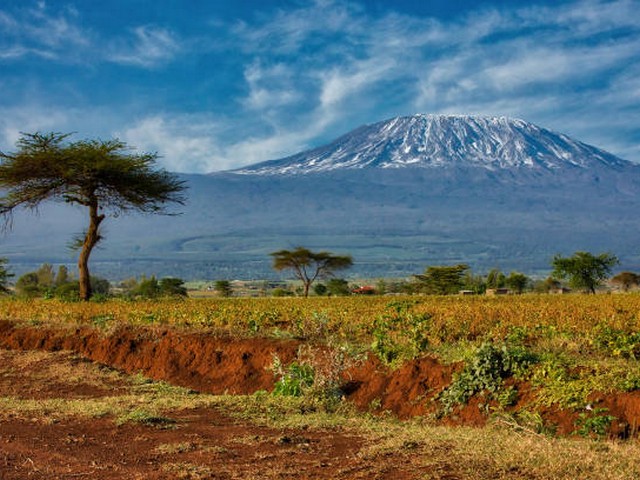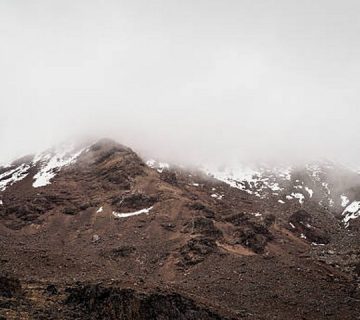Must-Have Trekking Accessories For Kilimanjaro: Your Ultimate Guide to a Successful Summit
Introduction: Embark on Your Kilimanjaro Adventure Prepared and Inspired
The majestic Mount Kilimanjaro, standing proud at 5,895 meters, is not just a mountain; it’s a monumental journey through diverse ecosystems and breathtaking vistas. At the Kilimanjaro Centre for Trekking and Ecotourism (KCTE), we understand the allure of Kilimanjaro’s snowy summit, and more importantly, the preparation required to conquer it. The right trekking accessories are not just add-ons; they are crucial companions that shepherd you safely to the roof of Africa. In this blog post, we illuminate the essential trekking accessories that ensure a safe, enjoyable, and successful climb, helping transform your lofty ambition into an extraordinary reality.
H2: Essential Trekking Gear: What You Can’t Afford to Forget
H3: Reliable Footwear: Your Foundation for Every Step
The journey to Uhuru Peak is paved with varied terrains, from dusty trails to slippery slopes. Investing in high-quality, broken-in hiking boots is paramount. Look for waterproof, breathable options with sturdy soles for grip and support. Remember, the right footwear is the difference between a challenging trek and a painful ordeal.
H3: Layer Up: Clothing for All Climates
Mount Kilimanjaro’s weather is famously erratic, traversing a gamut from tropical heat to freezing temperatures. Essential clothing includes:
- Moisture-wicking base layers: These keep you dry and comfortable by drawing sweat away from your skin.
- Insulating layers: Fleece or down jackets that can be easily added or removed are key.
- Waterproof outer layer: A breathable yet waterproof jacket and pants are vital against rain and wind.
Layering allows you to adjust to changing conditions, maintaining comfort throughout your ascent.
H3: Backpack: Your Trusty Cargo Carrier
A durable, well-fitting backpack is your lifeline on Kilimanjaro. It should comfortably hold all your essentials while distributing weight evenly to avoid strain. Opt for a 40-50 liter capacity with multiple compartments for easy access to gear. Don’t forget a rain cover to protect your belongings!
H3: Sleeping Essentials: Restorative Slumber at High Altitudes
Quality sleep is your body’s best recovery tool after a grueling day’s trek. Essential sleeping accessories include:
- Sleeping bag: Choose a four-season bag that can handle temperatures well below freezing.
- Sleeping pad: This not only provides comfort against the rugged ground but also insulation from the cold.
H2: Navigational Tools and Health Safeguards
H3: Stay on Track: GPS and Maps
While the trails on Kilimanjaro are well-marked, having a GPS device and physical maps can be invaluable, especially in poor visibility conditions. They also enrich your understanding of the terrain, making your journey more engaging.
H3: Health and Safety Must-Haves
Altitude sickness is a real concern on Kilimanjaro. Equip yourself with:
- Altitude sickness medication: Consult with your doctor before you depart.
- Water purification tablets or a water filter bottle: Ensuring your drinking water is clean is crucial to prevent illness.
- First aid kit: Pack essentials like bandages, antiseptics, blister plasters, and painkillers.
H2: Little Luxuries and Technological Supports
H3: Power Sources: Stay Charged and Connected
Photographing the stunning landscapes or navigating with electronic devices requires power. A solar charger or power bank ensures your gadgets are fueled throughout your trek.
H3: Trekking Poles: Ease Your Ascent and Descent
Trekking poles are invaluable for reducing the impact on your knees and improving balance on uneven terrain. They can make the difference between a taxing trek and a more manageable adventure.
H2: Personal Items and Extras
H3: Personal Hygiene and Comfort
Maintain your hygiene and morale with:
- Biodegradable soap
- Toothbrush and toothpaste
- Wet wipes
- Toilet paper
H3: Sunglasses and Sunscreen
Protect yourself from the equatorial sun with UV-blocking sunglasses and broad-spectrum sunscreen. A sun hat is also advisable to shield your face and neck.
Summary: Ready, Set, Climb with KCTE!
Equipped with these must-have trekking accessories, you’re all set to tackle the grandeur of Kilimanjaro. Remember, every accessory has a role in ensuring your climb is not just possible but also pleasant and safe. At Kilimanjaro Centre for Trekking and Ecotourism (KCTE), we are dedicated to making your Kilimanjaro experience unforgettable from start to finish. Book your climb with us today and step confidently towards achieving your summit dreams with the best in guidance and support.
Frequently Asked Questions
Q: How important are trekking poles for the Kilimanjaro climb?
A: Extremely! They reduce knee strain and increase stability, which can be crucial, especially during descents.
Q: Can I rent trekking gear in Tanzania?
A: Yes, Kilimanjaro Centre for Trekking and Ecotourism (KCTE) offers high-quality rental options for major trekking gear, though we recommend bringing personal items and footwear for best fit and comfort.
Q: What is the best time of year to climb Kilimanjaro?
A: The best times are during the dry seasons, from June to October and from December to March. These periods offer clearer skies and more temperate weather.
Q: How do I prevent altitude sickness?
A: Acclimatization is key. Consider a route that allows for gradual ascent, stay hydrated, eat well, and consult with a doctor about medications that can help.
Embark on your journey equipped not just with gear but with spirit and enthusiasm. Let Kilimanjaro Centre for Trekking and Ecotourism (KCTE) guide you to the peak with expertise and care. See you at the summit!




